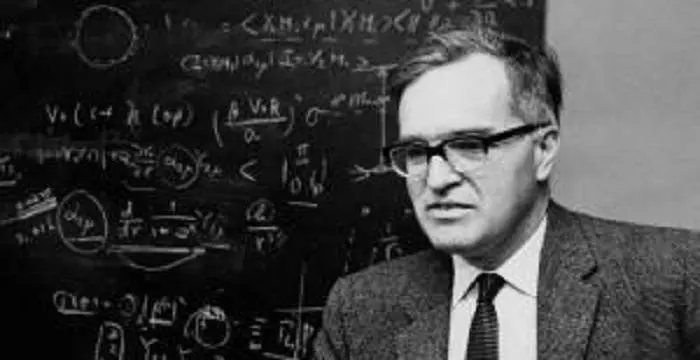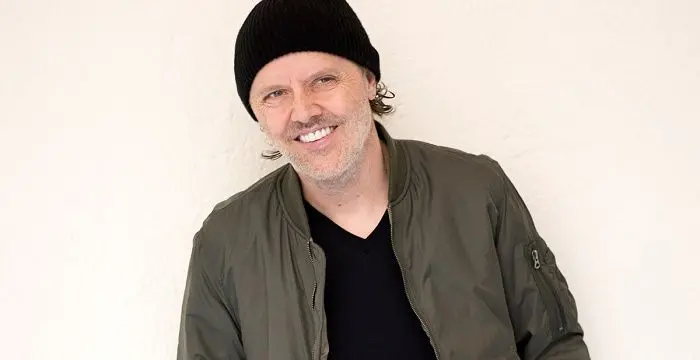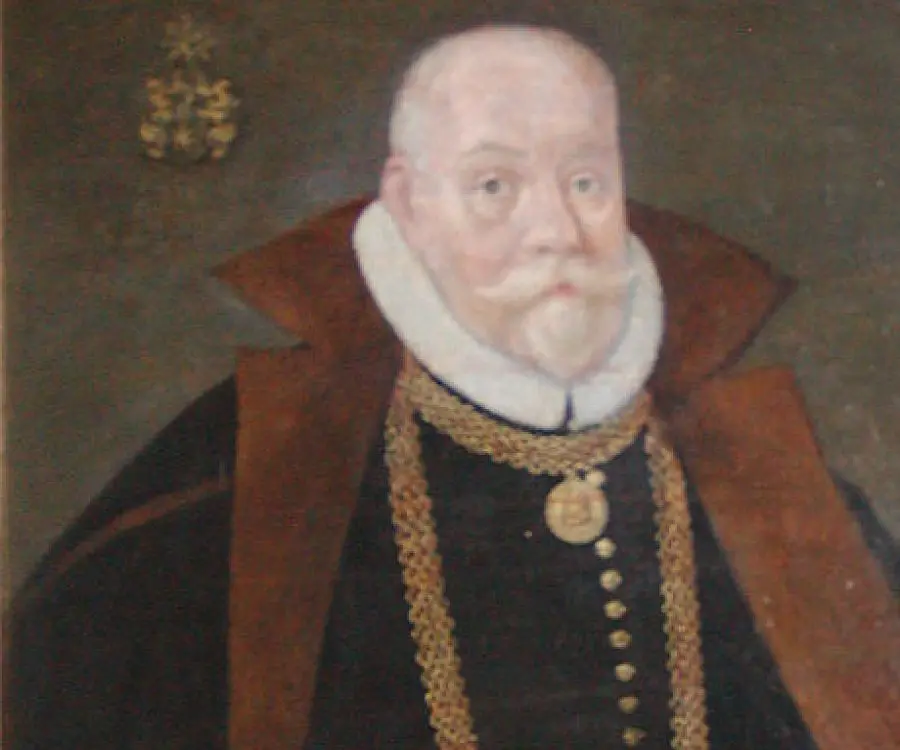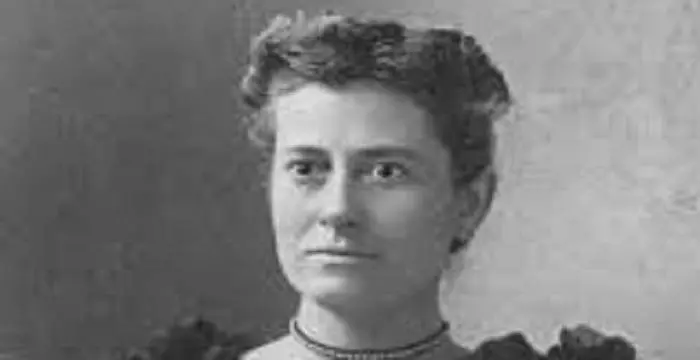
Tycho Brahe - Danish Men, Timeline and Childhood
Tycho Brahe's Personal Details
Tycho Brahe was a Danish nobleman who made important contributions to astronomy
| Information | Detail |
|---|---|
| Birthday | December 14, 1546 |
| Died on | October 24, 1601 |
| Nationality | Danish |
| Famous | Scientists, Astronomers, Danish Men |
| Spouses | Kirsten Jørgensdatter |
| Siblings | Kirstine Brahe, Sophia Brahe |
| Known as | Tyge Ottesen Brahe |
| Childrens | Claudius Brahe, Elisabeth Brahe, Jörgen Brahe, Kirstine Brahe, Magdalene Brahe, Sidsel Brahe, Sophie Brahe, Tyge Brahe |
| Universities |
|
| Discoveries / Inventions |
|
| Birth Place | Knutstorp Castle, Sweden |
| Religion | Lutheran |
| Gender | Male |
| Father | Otte Brahe |
| Mother | Beate Bille |
| Sun Sign | Sagittarius |
| Born in | Knutstorp Castle, Sweden |
| Famous as | Astronomer |
| Died at Age | 54 |
// Famous Danish Men
Benjamin Lasnier
Check out all that you wanted to know about Benjamin Lasnier, the famous singer & social media star; his birthday, his family and personal life, his girlfriends, fun trivia facts and more.
Aage Bohr
Aage Niels Bohr was a Nobel Prize winning nuclear physicist. This biography profiles his childhood, life, research career, achievements and timeline.
Lars Ulrich
Lars Ulrich is one of the founding members and drummer of the famous heavy metal band Metallica. This biography provides detailed information on his childhood, life, career, achievements & timeline.
Tycho Brahe's photo
Who is Tycho Brahe?
Tycho Brahe was a Danish astronomer, noted as much for developing many fine astronomical instruments as for his near-accurate positioning of stars without the aid of telescope. Born sixteenth century into a powerful noble family of Denmark, he was being trained for civil service when at the age of fourteen, his interest turned to astronomy. Thereafter, he began to collect books on the subject, reading them at night when his guardian was sleeping. Later he started his career as an alchemist, building a laboratory and an observatory at his maternal uncle’s estate. While he improved paper manufacturing technique, producing papers in nearby mill, he also continued to watch the sky, discovering a new star on11 November 1572. After continuously watching it he published a paper in the following year, becoming instantly famous. Subsequently, on the patronage of Danish King, he built two fine observatories at Hven, where he continued with his observations, until circumstances forced him to go into exile. He spent the last years of his life at the Imperial Court of Holy Roman Emperor Rudolf II occupying the position of Imperial Mathematician and Astrologer.
// Famous Scientists
Juliane Koepcke
Juliane Koepcke is a German-Peruvian biologist, who was the lone survivor among the 92 passengers and crew of the ill-fated LANSA Flight 508 that crashed in the Peruvian rainforest on 24 December 1971. Know more about her life in this biography.
Henry Cavendish
Henry Cavendish was a theoretical chemist and physicist, renowned for discovery of hydrogen and calculation of the mass of earth. To know more about his childhood, profile, timeline and career read on
Konstantin Tsiolkovsky
Konstantin Tsiolkovsky was a Russian rocket scientist and a pioneer of astronautics. This biography provides detailed information about his childhood, family, personal life, career, achievements, etc.
Childhood & Early Years
Tycho Brahe was born as Tyge Ottesen Brahe on 14 December 1546 at Knutstorp Castle, located eight kilometers north of Svalöv, then under Danish Scania, but now a part of Sweden. The castle was the ancestral seat of the Brahes, one of the most powerful noble families of Denmark.
Tycho’s father, Otte Brahe, was a rich and powerful nobleman, possessing vast stretches of land. Serving on the Rigsraadet, the Council of the Realm, he later became the governor of the castle of Helsingborg, which controlled the main waterways to the Baltic Sea.
Tycho’s mother, Beate Clausdatter nee Bille, also came from another powerful noble family. She was the daughter of Clause Bille, a member of both the Norwegian and the Danish Councils of the Realm. She herself was a member of the royal court and became the Chief Lady-in-Waiting for Queen Sophie.
Tycho was born second of his parents’ twelve children, having an elder sister named Lizbeth. He had a twin brother, who died before baptism. Three other siblings also died before reaching adulthood. His youngest sibling, Sophie Brahe, later became known for her knowledge in horticulture, astronomy, chemistry and medicine.
At the age of two, Tycho was abducted by his childless uncle, Jørgen Thygesen Brahe, Commander of Tostrup Castle, to be raised as his son. Strangely, the family remained united even after this incident and his biological parents never tried to take him back.
The adoption was highly beneficial for Tycho. While the Brahes and the Billes had little interest or time for scholarship, Tycho’s foster mother, Inger Oxe, came from scholarly family and had deep interest in it.
Until the age of six, Tycho lived with his foster parents at Tostrup Castle. Later in 1552, the family moved to Vordingborg Castle, where Tycho began his formal education at the local cathedral school, having a comprehensive education, completing it by the age of twelve.
On 19 April 1559, in accordance with his foster father’s wishes, twelve year old Tycho entered the Lutheran University of Copenhagen to study law. However, he also had to study a number of other subjects including mathematics, philosophy, Aristotelian physics and cosmology.
His interest was turned to astronomy when he witnessed a total solar eclipse that occurred on 21 August 1560. What intrigued him most was that the event had been predicted earlier. That the timing was wrong also dismayed fourteen year old Tycho, making him determined to do better.
He immediately obtained a copy of ‘Ephemerides’ by Stadius and began to study it. Very soon, he immersed himself in studying other books on astronomy, such as ‘De sphaera mundi’ by Johannes de Sacrobosco, ‘Cosmographia seu descriptio totius orbis’ by Petrus Apianus and ‘De triangulis omnimodis’ by Regiomontanus.
His interest in astronomy alarmed his foster parents. Therefore, in February 1562, they withdrew fifteen year old Tycho from the University of Copenhagen and put him in University of Leipzig, sending with him, nineteen year old Anders Sørensen Vedel, as his tutor.
Tycho joined Leipzig in March 1562. Although astronomy was not part of his curriculum there, he had taken his books with him and in spite of his tutor’s endeavor to keep him busy with his study of law he continued to study astronomy secretly at night.
He also saved whatever amount he could to buy books and instruments on astronomy. Slowly he began to make observations, keeping records of them. However, it was not until he observed the conjunction of Jupiter and Saturn in August 1563 that he devoted himself entirely on astronomy.
He found that neither Ptolemy nor Copernicus could give the exact date and realized that to make exact prediction one needed to make more systematic and rigorous observation. He now began to maintain detailed journal of all his astronomical observations and started studying astronomy with Bartholomew Schultz.
In May 1565, Tycho returned home and his foster father passed away in the following month. Since he was still under eighteen; his biological parents now took charge of him.
In 1566, he once more left home, enrolling first at the University of Wittenberg on 15 April. Here, he studied with Casper Peucer for five months. Thereafter on 24 September, he enrolled at the University of Rostock, where he had part of his nose cut off in a sword duel.
At Rostock, he observed a lunar eclipse 28 October 1566 and a partial solar eclipse on 9 April 1567. Also in April, on graduating from the University of Rostock, he returned home to have an artificial nose made out of brass, which he wore for the rest of his life.
Early Career
Although his father was keen that he immediately joined the civil service, Tycho Brahe persuaded him to allow him to make one more trip. Thus Tycho was back to Rostock by January 1568, later visiting Basel, Freiburg, and Augsburg.
It was at Augsburg that he managed to obtain a patron, on whose estate, he built a huge quadrant. Although it was very accurate it was too big and allowed only one observation per night. Apart from that, he also constructed a large celestial globe with wood.
Tycho returned home towards the end of 1570 and his father died in May 1571. Thereafter, his maternal uncle, Steen Bille, suggested that he start living in Herrevad Abbey, at that time under his control.
With Steen Bille’s financial help Tycho Brahe built a laboratory at Herrevad Abbey where he invented an improved technique for manufacturing of paper and very soon started producing the material in Klippan Mill, located nearby. Later, he also helped in erecting a glasswork in the Abbey.
On the evening of 11 November 1572, after emerging from his laboratory, Tycho noticed a new star in the constellation of Cassiopeia. Not sure of himself, he called his assistant, possibly his sister Sophia, to verify it. Once it was done, he had it under observation continuously till March 1574.
Tycho soon realized the new star was located beyond the moon, in the domain of the fixed stars. In 1573, he published his observation as ‘De nova stella’, inducing other scholars to observe it. Today the star is known as ‘Tycho’s supernova’.
As An Astronomer
Discovery of the supernova established Tycho Brahe as a leading astronomer. In September 1574, he received appointment as a lecturer of astronomy in the University of Copenhagen; but gave it up from following spring as he began to receive an annual income from his father’s estate.
On leaving his job, Tycho went on a tour visiting several cities. On his return, King Frederick offered him lordship of several important estates; but he refused them, preferring to devote his time to the study of astronomy, finally relenting when the king offered the island of Hven in Øresund.
At Hven, with the financial assistance of King Frederick, Tycho built the first custom built laboratory in Europe, dedicating the building to the Muse of Astronomy, Urania and naming it The Castle of Urania or Uraniborg. However, he soon found that the tower-mounted instruments were moved easily by the wind.
Looking for a more suitable position, he now built Stjerneborg or the Castle of the Stars at ground level. Working from these laboratories, surrounded by scholars, Tycho continued to observe the sky, not only making new entries, but also correcting mistakes in previous observations.
He also kept in touch with astronomers and scientists from across Europe through letters, enquiring about their work, discussing his own progress. While many of these scholars came to visit him at Hven, he developed enmity with some others.
Tycho’s good time ended, when in 1588, his mentor, King Frederick of Denmark, died. Because of his enmity with the powerful nobles surrounding the new king, Christian IV, the funds became scarce. Yet, he remained there till 1597, completing his star catalogue providing the positions of more than 777 stars.
In Exile
On leaving Hven, Tycho first moved to Copenhagen, where his house was surrounded by an angry mob. It is believed they were instigated by his adversaries. Worried about the security of his family, he then moved to the castle of his friend, Heinrich Rantzau, in Wandesburg, outside Hamburg.
He lived in Wandesburg until 1598 and then moved for a short period to Wittenberg. Also in 1598, he had ‘Astronomiae instauratae mechanica’ (Instruments for the restoration of astronomy) published.
In 1599, he obtained patronage of Rudolf II, Holy Roman Emperor and moved to Prague to become the Imperial Mathematician and Astrologer. It was here that Johannes Kepler joined him as an assistant. Subsequently, Tycho built a new observatory in Benátky nad Jizerou and began working from there.
Tycho Brahe worked at his new observatory for one year only, after which, he was brought back to Prague by the Emperor. Here he lived until his death, working on a set of astronomical tables based on his thirty years of observation. These would later be called Rudolf tables.
Major Works
Tycho’s first major work was the discovery of a new star in 1572. Now numbered SN 1572, it is also known as Tycho’s supernova or Tycho’s nova. The discovery refuted the contemporary belief that the world beyond the moon remained unchanged and established him as an astronomer.
Tycho is also remembered for determining the position of more than 777 stars as accurately as possible without the aid of telescope, which was yet to be invented. To aid his observations, he invented number of instruments, which later paved the way for further inventions.
He also undertook a comprehensive study of the solar system. However, he believed that unlike other planets, which revolved around the sun, the earth was static, with the moon revolving around it.
Personal Life & Legacy
Towards the end of 1571, Tycho Brahe met Kirsten Jørgensdatter, daughter of Jørgen Hansen, the Lutheran minister in Knudstrup. As she was a commoner, they could not get married without jeopardizing his noble privileges. But as the law permitted morganatic marriage, they lived as husband and wife till his death.
They had eight children, out of which six lived to see adulthood. Their surviving children were Kristen/Kristine (1573), Magdalene (1574), Elizabeth (1579), Tycho (1581) Cecilie (1582) and George (1583).
As per Danish law, his wife and children were deprived of noble status and barred from inheriting his property. Although King Frederick agreed to pass the ownership of Hven to his heirs, his successor refused to do so. They were however treated as nobles at the Imperial court in Prague.
On 13 October 1601, while attending a banquet at the palace of Peter Vok Ursinus Rozmberk, Tycho needed to urinate. But he held back the pressure as leaving the table before the host was considered a breach of etiquette.
By the time he reached home, his condition was such that he could no longer relieve himself. After suffering for eleven days, he finally died on 24 October 1601. Before his death, he asked Kepler to finish the Rudolf tables by using his planetary system rather than the Copernicus’ system.
Tycho Brahe is buried in the Church of Our Lady before Týn, in Old Town Square in Prague. In 2010, his body was exhumed and the scholars now believe that he might have died of a burst bladder.
// Famous Astronomers
Jabir Ibn Hayyan
Jabir Ibn Hayyan was a medieval era polymath. Check out this biography to know about his life, works and achievements.
Isaac Newton
Isaac Newton was an English scientist and mathematician, who discovered gravitation and Newtonian Mechanics. Read this biography to find more on his life.
Henrietta Swan Leavitt
Henrietta Swan Leavitt was an American astronomer. Check out this biography to know about her childhood, family, personal life, discoveries, achievements, etc.
Tycho Brahe biography timelines
- // 14th Dec 1546Tycho Brahe was born as Tyge Ottesen Brahe on 14 December 1546 at Knutstorp Castle, located eight kilometers north of Svalöv, then under Danish Scania, but now a part of Sweden. The castle was the ancestral seat of the Brahes, one of the most powerful noble families of Denmark.
- // 1552Until the age of six, Tycho lived with his foster parents at Tostrup Castle. Later in 1552, the family moved to Vordingborg Castle, where Tycho began his formal education at the local cathedral school, having a comprehensive education, completing it by the age of twelve.
- // 19th Apr 1559On 19 April 1559, in accordance with his foster father’s wishes, twelve year old Tycho entered the Lutheran University of Copenhagen to study law. However, he also had to study a number of other subjects including mathematics, philosophy, Aristotelian physics and cosmology.
- // 21st Aug 1560His interest was turned to astronomy when he witnessed a total solar eclipse that occurred on 21 August 1560. What intrigued him most was that the event had been predicted earlier. That the timing was wrong also dismayed fourteen year old Tycho, making him determined to do better.
- // Feb 1562His interest in astronomy alarmed his foster parents. Therefore, in February 1562, they withdrew fifteen year old Tycho from the University of Copenhagen and put him in University of Leipzig, sending with him, nineteen year old Anders Sørensen Vedel, as his tutor.
- // Mar 1562Tycho joined Leipzig in March 1562. Although astronomy was not part of his curriculum there, he had taken his books with him and in spite of his tutor’s endeavor to keep him busy with his study of law he continued to study astronomy secretly at night.
- // Aug 1563He also saved whatever amount he could to buy books and instruments on astronomy. Slowly he began to make observations, keeping records of them. However, it was not until he observed the conjunction of Jupiter and Saturn in August 1563 that he devoted himself entirely on astronomy.
- // May 1565In May 1565, Tycho returned home and his foster father passed away in the following month. Since he was still under eighteen; his biological parents now took charge of him.
- // 1566In 1566, he once more left home, enrolling first at the University of Wittenberg on 15 April. Here, he studied with Casper Peucer for five months. Thereafter on 24 September, he enrolled at the University of Rostock, where he had part of his nose cut off in a sword duel.
- // 28th Oct 1566 To 9th Apr 1567At Rostock, he observed a lunar eclipse 28 October 1566 and a partial solar eclipse on 9 April 1567. Also in April, on graduating from the University of Rostock, he returned home to have an artificial nose made out of brass, which he wore for the rest of his life.
- // Jan 1568Although his father was keen that he immediately joined the civil service, Tycho Brahe persuaded him to allow him to make one more trip. Thus Tycho was back to Rostock by January 1568, later visiting Basel, Freiburg, and Augsburg.
- // 1570 To May 1571Tycho returned home towards the end of 1570 and his father died in May 1571. Thereafter, his maternal uncle, Steen Bille, suggested that he start living in Herrevad Abbey, at that time under his control.
- // 1571Towards the end of 1571, Tycho Brahe met Kirsten Jørgensdatter, daughter of Jørgen Hansen, the Lutheran minister in Knudstrup. As she was a commoner, they could not get married without jeopardizing his noble privileges. But as the law permitted morganatic marriage, they lived as husband and wife till his death.
- // 1572Tycho’s first major work was the discovery of a new star in 1572. Now numbered SN 1572, it is also known as Tycho’s supernova or Tycho’s nova. The discovery refuted the contemporary belief that the world beyond the moon remained unchanged and established him as an astronomer.
- // 11th Nov 1572 To Mar 1574On the evening of 11 November 1572, after emerging from his laboratory, Tycho noticed a new star in the constellation of Cassiopeia. Not sure of himself, he called his assistant, possibly his sister Sophia, to verify it. Once it was done, he had it under observation continuously till March 1574.
- // 1573Tycho soon realized the new star was located beyond the moon, in the domain of the fixed stars. In 1573, he published his observation as ‘De nova stella’, inducing other scholars to observe it. Today the star is known as ‘Tycho’s supernova’.
- // Sep 1574Discovery of the supernova established Tycho Brahe as a leading astronomer. In September 1574, he received appointment as a lecturer of astronomy in the University of Copenhagen; but gave it up from following spring as he began to receive an annual income from his father’s estate.
- // 1588 To 1597Tycho’s good time ended, when in 1588, his mentor, King Frederick of Denmark, died. Because of his enmity with the powerful nobles surrounding the new king, Christian IV, the funds became scarce. Yet, he remained there till 1597, completing his star catalogue providing the positions of more than 777 stars.
- // 1598He lived in Wandesburg until 1598 and then moved for a short period to Wittenberg. Also in 1598, he had ‘Astronomiae instauratae mechanica’ (Instruments for the restoration of astronomy) published.
- // 1599In 1599, he obtained patronage of Rudolf II, Holy Roman Emperor and moved to Prague to become the Imperial Mathematician and Astrologer. It was here that Johannes Kepler joined him as an assistant. Subsequently, Tycho built a new observatory in Benátky nad Jizerou and began working from there.
- // 13th Oct 1601On 13 October 1601, while attending a banquet at the palace of Peter Vok Ursinus Rozmberk, Tycho needed to urinate. But he held back the pressure as leaving the table before the host was considered a breach of etiquette.
- // 24th Oct 1601By the time he reached home, his condition was such that he could no longer relieve himself. After suffering for eleven days, he finally died on 24 October 1601. Before his death, he asked Kepler to finish the Rudolf tables by using his planetary system rather than the Copernicus’ system.
- // 2010Tycho Brahe is buried in the Church of Our Lady before Týn, in Old Town Square in Prague. In 2010, his body was exhumed and the scholars now believe that he might have died of a burst bladder.
// Famous Sagittarius Celebrities peoples
Billie Eilish
Billie Eilish Pirate Baird O’Connell is an American singer and songwriter. Check out this biography to know about her childhood, family, personal life, birthday, etc.
Jacelyn Reeves
Jacelyn Reeves is a former flight attendant who once had a fling with Clint Eastwood. Check out this biography to know about her birthday, childhood, family life, achievements and fun facts about her.
Edmund Kemper
Edmund Kemper is a convicted serial killer from America who murdered ten people. Check out this biography to know about his childhood, life, crimes and other facts about him.
Pietro Boselli
Pietro Boselli is an Italian model, engineer, teacher, and fitness athlete who became famous as the ‘world’s sexiest math teacher’. Check out this biography to know about his birthday, childhood, family life, achievements and fun facts about him.
Niqoles Heard
Lil Niqo is an American rapper and musical artist. Let’s take a look at his family and personal life including age, date of birth, net worth, girlfriends, and fun facts.
Ted Nugent
Ted Nugent is a hard rock musician known for his hits ‘Stranglehold’ and ‘Cat Scratch Fever’. This biography of Ted Nugent provides detailed information about his childhood, life, achievements, works & timeline.
Tycho Brahe's FAQ
What is Tycho Brahe birthday?
Tycho Brahe was born at 1546-12-14
When was Tycho Brahe died?
Tycho Brahe was died at 1601-10-24
Where was Tycho Brahe died?
Tycho Brahe was died in Prague, Holy Roman Empire
Which age was Tycho Brahe died?
Tycho Brahe was died at age 54
Where is Tycho Brahe's birth place?
Tycho Brahe was born in Knutstorp Castle, Sweden
What is Tycho Brahe nationalities?
Tycho Brahe's nationalities is Danish
Who is Tycho Brahe spouses?
Tycho Brahe's spouses is Kirsten Jørgensdatter
Who is Tycho Brahe siblings?
Tycho Brahe's siblings is Kirstine Brahe, Sophia Brahe
Who is Tycho Brahe childrens?
Tycho Brahe's childrens is Claudius Brahe, Elisabeth Brahe, Jörgen Brahe, Kirstine Brahe, Magdalene Brahe, Sidsel Brahe, Sophie Brahe, Tyge Brahe
What was Tycho Brahe universities?
Tycho Brahe studied at University of Copenhagen, University of Rostock
What is Tycho Brahe's inventions/discoveries?
SN 1572 was invented (or discovered) by Tycho Brahe
What is Tycho Brahe's religion?
Tycho Brahe's religion is Lutheran
Who is Tycho Brahe's father?
Tycho Brahe's father is Otte Brahe
Who is Tycho Brahe's mother?
Tycho Brahe's mother is Beate Bille
What is Tycho Brahe's sun sign?
Tycho Brahe is Sagittarius
How famous is Tycho Brahe?
Tycho Brahe is famouse as Astronomer

















